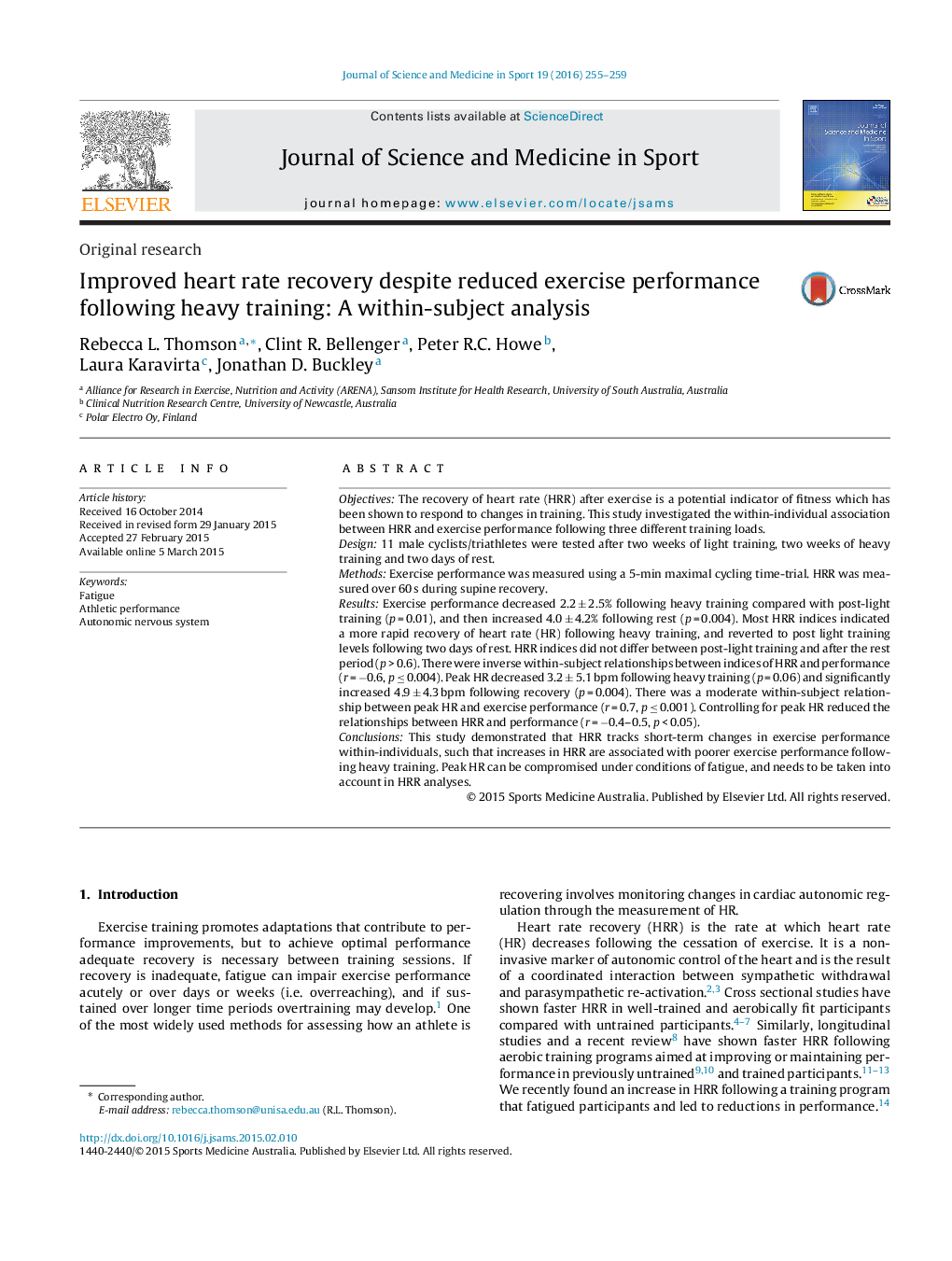| Article ID | Journal | Published Year | Pages | File Type |
|---|---|---|---|---|
| 2702744 | Journal of Science and Medicine in Sport | 2016 | 5 Pages |
ObjectivesThe recovery of heart rate (HRR) after exercise is a potential indicator of fitness which has been shown to respond to changes in training. This study investigated the within-individual association between HRR and exercise performance following three different training loads.Design11 male cyclists/triathletes were tested after two weeks of light training, two weeks of heavy training and two days of rest.MethodsExercise performance was measured using a 5-min maximal cycling time-trial. HRR was measured over 60 s during supine recovery.ResultsExercise performance decreased 2.2 ± 2.5% following heavy training compared with post-light training (p = 0.01), and then increased 4.0 ± 4.2% following rest (p = 0.004). Most HRR indices indicated a more rapid recovery of heart rate (HR) following heavy training, and reverted to post light training levels following two days of rest. HRR indices did not differ between post-light training and after the rest period (p > 0.6). There were inverse within-subject relationships between indices of HRR and performance (r = −0.6, p ≤ 0.004). Peak HR decreased 3.2 ± 5.1 bpm following heavy training (p = 0.06) and significantly increased 4.9 ± 4.3 bpm following recovery (p = 0.004). There was a moderate within-subject relationship between peak HR and exercise performance (r = 0.7, p ≤ 0.001). Controlling for peak HR reduced the relationships between HRR and performance (r = −0.4–0.5, p < 0.05).ConclusionsThis study demonstrated that HRR tracks short-term changes in exercise performance within-individuals, such that increases in HRR are associated with poorer exercise performance following heavy training. Peak HR can be compromised under conditions of fatigue, and needs to be taken into account in HRR analyses.
